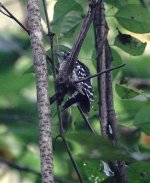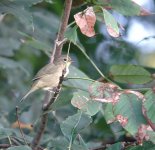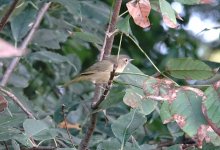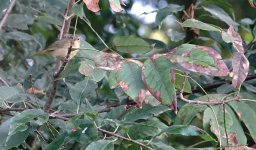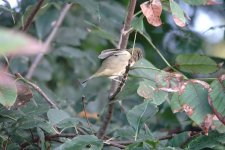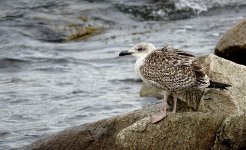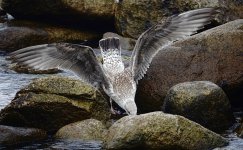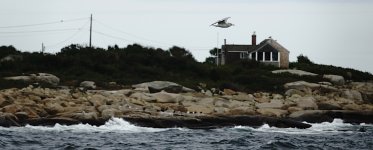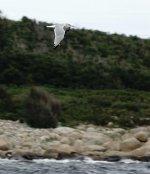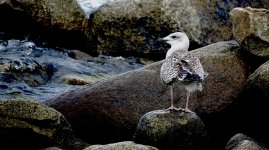MKinHK
Mike Kilburn

USA - a three hop stop 1- 8 September 2018
USA - a three hop stop 1- 7 September 2018
Another flying visit to the US for the final round of dental treatment took Carrie and I to Chicago for a day, Farmington Connecticut for two days, and to Boston and the coastal village of Rockport for the last three days.
We were mostly in Chicago to visit family friends, but this allowed time for a morning of birding at Montrose Point Bird Sanctuary, which protrudes from the western shore into Lake Michigan a 15 minute uber ride from downtown Chicago. I had high hopes that overnight rain might have brought in some birds and was there with longtime family friend Kelly before seven on an overcast but clearing morning.
As the light was dim we started with a walk along the pier, seeing a few Mallard and a solitary female Hooded Merganser in the shallowest water, while the odd American Herring Gull and Double-crested Cormorant were bouncing around on the lightly choppy unprotected waters of the lake. Right at the end of the jetty a wonderful pair of juvenile Red Knot were strolling casually among the fishermen and their tackle. Presumably they had never previously seen people, and were completely unafraid.
Other birds on the marsh and the beach included Ring-billed Gulls, a Semipalmated Plover, and four calidrids, which I guess were Semi-palmated Sandpipers. A juvenile Cooper’s Hawk zipped with malice aforethought over the marshy area in the dune hummocks and later perched close-by on a lamp post.
As we approached the woods a mixed flock of Barn Swallows and Chimney Swifts flew over, and as we entered the woods we soon began finding some of the migrants I was hoping to connect with. First up were a Red-eyed Vireo and the first of half a dozen female American Redstarts that came in at eye level in response to my pishing, while a Grey Catbird miaowed from deep cover without ever offering to show itself.
The northernmost area of the woods really came into its own as the sun came out, and with the available minutes ticking away I was delighted to add – thanks to the patient help of several local birders - four lifers in the form of juvenile Bay Breasted Warbler, the startlingly bright green juvenile Chestnut-sided Warbler, a couple of streaky Cape May Warblers and two delightfully showy Swainson’s Thrushes. Other birds here included a fine female Wilson’s Warbler, and several each of Black-capped Chickadee, House Finch and Red Cardinal. Birds I did not connect with for lack of time were Blackpoll Warbler, Magnolia Warbler, Blue-Grey Gnatcatcher, and a Veery, plus Forster’s Tern and Willet on the beach.
So I continue to add my American wood warbler a handful at a time - and still have many species still to be found. Next stop – Farmington, Connecticut.
Cheers
Mike
USA - a three hop stop 1- 7 September 2018
Another flying visit to the US for the final round of dental treatment took Carrie and I to Chicago for a day, Farmington Connecticut for two days, and to Boston and the coastal village of Rockport for the last three days.
We were mostly in Chicago to visit family friends, but this allowed time for a morning of birding at Montrose Point Bird Sanctuary, which protrudes from the western shore into Lake Michigan a 15 minute uber ride from downtown Chicago. I had high hopes that overnight rain might have brought in some birds and was there with longtime family friend Kelly before seven on an overcast but clearing morning.
As the light was dim we started with a walk along the pier, seeing a few Mallard and a solitary female Hooded Merganser in the shallowest water, while the odd American Herring Gull and Double-crested Cormorant were bouncing around on the lightly choppy unprotected waters of the lake. Right at the end of the jetty a wonderful pair of juvenile Red Knot were strolling casually among the fishermen and their tackle. Presumably they had never previously seen people, and were completely unafraid.
Other birds on the marsh and the beach included Ring-billed Gulls, a Semipalmated Plover, and four calidrids, which I guess were Semi-palmated Sandpipers. A juvenile Cooper’s Hawk zipped with malice aforethought over the marshy area in the dune hummocks and later perched close-by on a lamp post.
As we approached the woods a mixed flock of Barn Swallows and Chimney Swifts flew over, and as we entered the woods we soon began finding some of the migrants I was hoping to connect with. First up were a Red-eyed Vireo and the first of half a dozen female American Redstarts that came in at eye level in response to my pishing, while a Grey Catbird miaowed from deep cover without ever offering to show itself.
The northernmost area of the woods really came into its own as the sun came out, and with the available minutes ticking away I was delighted to add – thanks to the patient help of several local birders - four lifers in the form of juvenile Bay Breasted Warbler, the startlingly bright green juvenile Chestnut-sided Warbler, a couple of streaky Cape May Warblers and two delightfully showy Swainson’s Thrushes. Other birds here included a fine female Wilson’s Warbler, and several each of Black-capped Chickadee, House Finch and Red Cardinal. Birds I did not connect with for lack of time were Blackpoll Warbler, Magnolia Warbler, Blue-Grey Gnatcatcher, and a Veery, plus Forster’s Tern and Willet on the beach.
So I continue to add my American wood warbler a handful at a time - and still have many species still to be found. Next stop – Farmington, Connecticut.
Cheers
Mike
Attachments
-
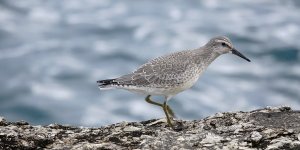 DSC01437 Red Knot @ Montrose Point.jpg303.4 KB · Views: 35
DSC01437 Red Knot @ Montrose Point.jpg303.4 KB · Views: 35 -
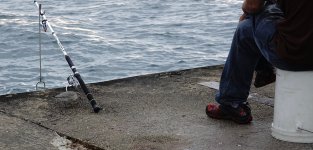 DSC01454 Red Knot @ Montrose Point.jpg369.5 KB · Views: 39
DSC01454 Red Knot @ Montrose Point.jpg369.5 KB · Views: 39 -
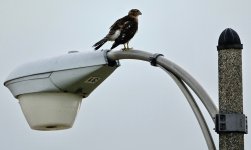 DSC01471 Cooper's Hawk @ Montrose Point.jpg215.2 KB · Views: 37
DSC01471 Cooper's Hawk @ Montrose Point.jpg215.2 KB · Views: 37 -
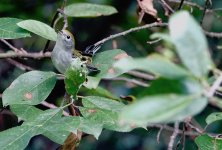 DSC01475 Chestnut-sided Warbler @ Montrose Point.jpg427.9 KB · Views: 41
DSC01475 Chestnut-sided Warbler @ Montrose Point.jpg427.9 KB · Views: 41 -
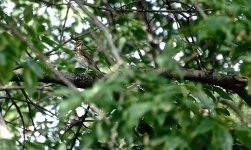 DSC01479 Swainson's Thrush @ Montrose Point.jpg390.3 KB · Views: 37
DSC01479 Swainson's Thrush @ Montrose Point.jpg390.3 KB · Views: 37
Last edited:




